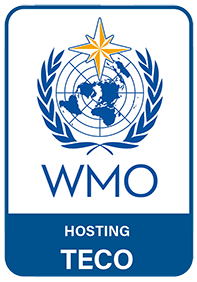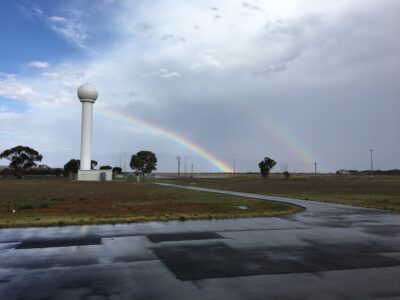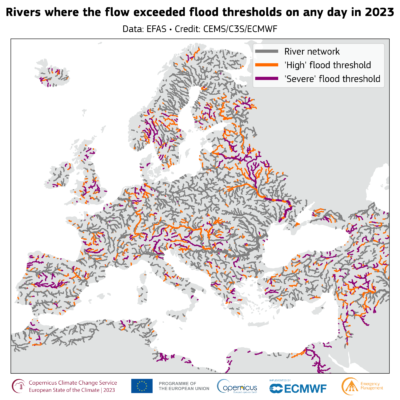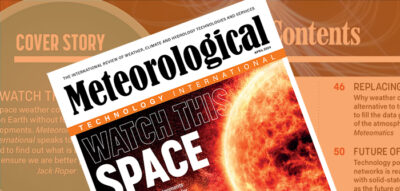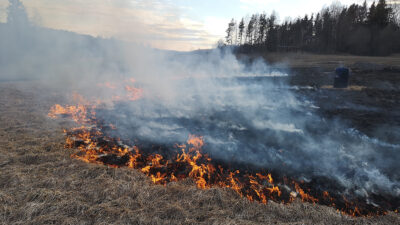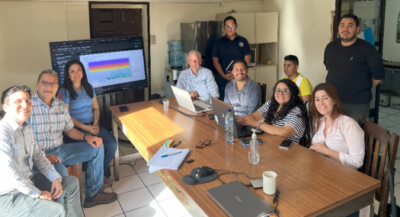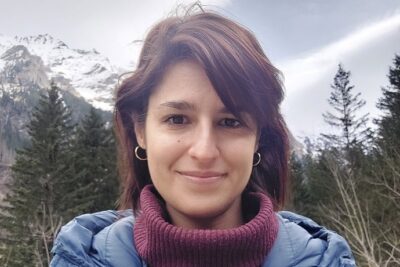Industry News
Australian Bureau of Meteorology installs weather radar in Toowoomba
The Australian Bureau of Meteorology (BoM) has installed a weather radar in Toowoomba in the Darling Downs region of Queensland.
Local impact
Images from the radar are now live on BoM’s website and the BOM weather app. The radar is intended to add coverage to current radar gaps to the west and southwest of Toowoomba.
Dr Peter Stone, senior responsible officer for the BoM Queensland, said, “This includes the northern parts of the Moonie and Border rivers catchments, the upper Condamine River catchment, and the mining and resources precinct around Chinchilla.”
Severe weather
The Toowoomba radar will improve the bureau’s ability to make weather observations in the region and warn the community about the potential impacts of severe weather as these events unfold.
Europe experienced widespread flooding and severe heat waves in 2023, Copernicus finds
In 2023, the impacts of climate change continued to be seen across Europe, with millions of people affected by extreme weather events, making the development of mitigation and adaptation measurements a priority. To achieve this, understanding climate trends is vital. The Copernicus Climate Change Service (C3S), together with the World Meteorological Organization (WMO), today released the 2023 European State of the Climate report (ESOTC 2023). It provides descriptions and analysis of climate conditions and variations from across the Earth system, key events and their impacts, and a discussion of climate policy and action with a focus on human health.
In this Issue – April 2024
The April 2024 issue is now available online! Packed full of news, interviews and features, including:
SPACE WEATHER : Space weather could cause chaos on Earth unless further developments in forecasting are made, with geomagnetic storms at risk of disrupting radio signals and navigation systems and even causing blackouts. Meteorological Technology International speaks to experts in the space weather sector to find out what is being done to ensure we are well prepared for such events
SUSTAINABLE OBSERVING SYSTEMS : The WMO shares its work to date on the development of more environmentally sustainable observing systems and methods for the global meteorological and hydrological sectors
IMPACT-BASED FORECASTING : Meteorological Technology International explores the continued development of impact-based forecasting, which provides the information needed to act before disasters to minimize the human and economic costs of weather and climate hazards
SPACE RADIATION : Meteorological Technology International examines NASA’s work to improve the prediction of space radiation, which is one of the greatest threats to an astronaut’s health and can cause critical damage to space-based instrumentation
CASE STUDY: TAHMO : This year the Trans-African Hydro-Meteorological Observatory celebrates a decade in operation.
Continue reading In this Issue – April 2024 at Meteorological Technology International.
FMI replaces grass and forest fire warnings with wildfire warnings
Starting this spring, the Finnish Meteorological Institute (FMI) will no longer issue separate grass and forest fire warnings but will replace them with a wildfire warning. The new term is defined in the revised Rescue Act, which entered into force at the beginning of 2024.
“The warnings aim to reduce wildfires in situations where the risk of a wildfire is evident, due to the drought of the terrain and weather conditions,” said account manager Tuomo Bergman from the Finnish Meteorological Institute.
Wildfire warnings are day-specific and can be issued up to five days in advance. The warning for the day is always given at midnight, but warnings can also be removed at other times, if the weather permits.
WMO develops hydrological capacity in Central America
WMO, in collaboration with the Central American Regional Committee for Hydraulic Resources (CRRH), has implemented a new approach to capacity development in the area of hydrology in Central America.
The approach leverages the voluntary exchange of knowledge between expert trainers, expert networks and WMO Regions and Regional Training Centres (RTC) to optimize resource investments. According to the WMO, this hydrological capacity development is essential to support Belize, Costa Rica, El Salvador, Guatemala, Honduras, Nicaragua and Panama in preparing to engage in the WMO Global Hydrological Status and Outlook System (HydroSOS).
Over the past two years, WMO and CRRH have completed on-site assessments of the capabilities of the National Hydrological Services (NHSs) of each country, which highlighted their capacity development needs.
FMI improves freeze/thaw monitoring with radar satellites
The Finnish Meteorological Institute (FMI) has released research dedicated to developing improvements to monitoring the freeze/thaw (F/T) state with synthetic aperture radar (SAR) satellites.
The new study presents significant improvements to the existing methods, such as taking into consideration changes in the summer season. Soil F/T information is useful, for example, for users of heavy equipment, such as forestry machines – as soil freezing has a significant effect on the bearing capacity.
Soil F/T state in the boreal forest was mapped using microwave L and C band SAR satellites. The study showed that the F/T state can be detected with good accuracy at both frequencies.
Two thirds of US adults affected by extreme weather in past 12 months, Annenberg Public Policy Center finds
According to survey data from the Annenberg Public Policy Center (APPC), most Americans report having personally experienced the effects of extreme weather in the past year.
The report found that two-thirds of US adults say that in the past year, their typical daily activities were affected either “sometimes, often, or frequently” by extreme outdoor heat, and half say that their typical daily activities were affected sometimes, often, or frequently by poor air quality resulting from wildfire smoke.
The APPC asserts that “an analysis finds a connection between these reported experiences and policy support”, adding that exposure to extreme weather is associated with support for a half-dozen policies intended to mitigate the effects of climate change.
INTERVIEW: Estíbaliz Gascón, weather forecast diagnostics specialist at ECMWF
Estíbaliz Gascón specializes in the evaluation and diagnostics of weather forecasts. She is now putting her skills to good use by evaluating forecasts of extreme weather events and diagnosing km-scale forecasts ECMWF is developing as part of the EU’s Destination Earth initiative.
Gascón liked science and nature before she started her environmental science degree in Spain but was unsure which direction to go in. During her studies, her interest in meteorology was awakened.
She followed up her first degree with a master’s in meteorology. After that, she initially worked for field campaigns at the University of León in Spain.

